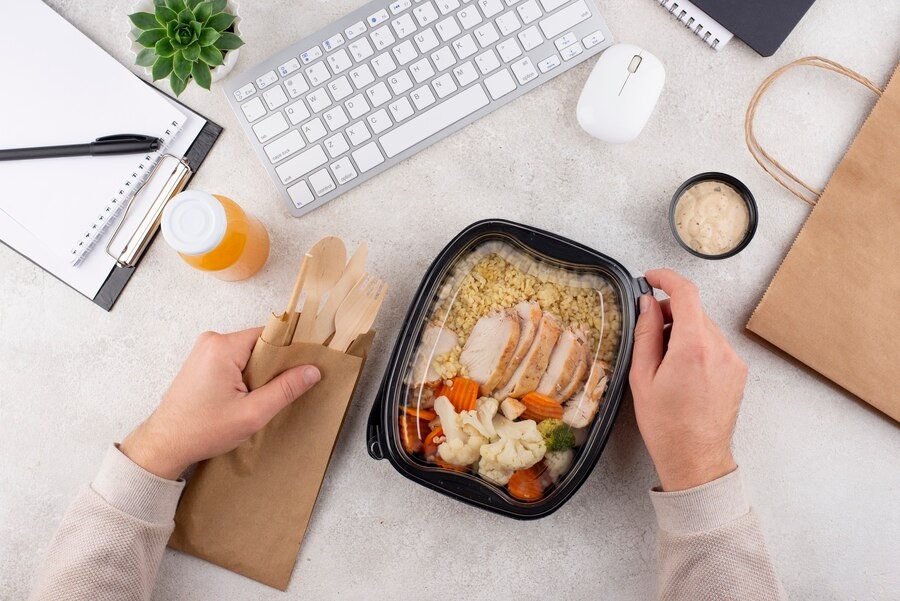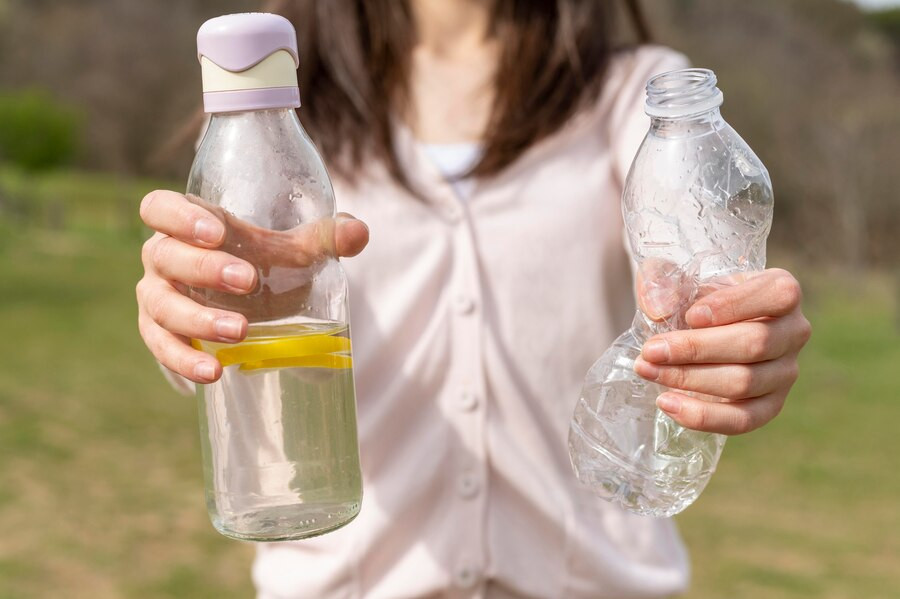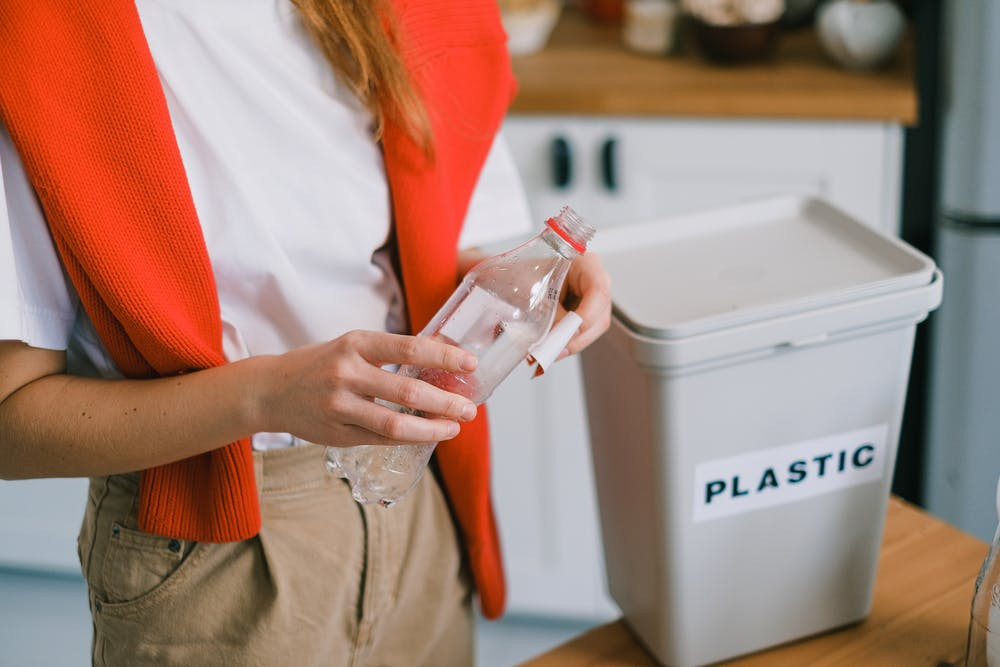BPA (Bisphenol A) adalah bahan kimia yang banyak digunakan dalam produk plastik dan resin. BPA sering ditemukan dalam berbagai produk sehari-hari seperti botol air minum, botol susu bayi, kemasan makanan, dan pelapis kaleng.
Kekhawatiran mengenai dampak kesehatan paparan BPA makin lama makin meningkat. Banyak penelitian menunjukkan bahwa paparan BPA bisa mengganggu hormon dan berpotensi menyebabkan masalah kesehatan seperti kanker, gangguan reproduksi, dan penyakit jantung.
Cara Mengurangi Paparan BPA
Untuk melindungi diri dan keluarga Anda, sangat penting mengetahui cara mengurangi paparan BPA. Berikut adalah beberapa langkah yang disarankan:
Memilih produk bebas BPA
Sangat penting untuk mengurangi paparan BPA dengan memilih produk bebas BPA. Sebagian besar produsen menawarkan versi produk plastik bebas BPA. Biasanya ini ditunjukkan dengan label "BPA Free" pada produk.
Anda juga perlu memperhatikan kode daur ulang di balik kemasan. Plastik dengan kode daur ulang 1, 2, 4, dan 5 umumnya tidak mengandung BPA. Pilih produk yang terbuat dari jenis plastik ini jika Anda tidak dapat menemukan label bebas BPA pada produk. Serta hindari plastik dengan kode 3 dan 7 yang sering kali mengandung BPA atau bahan kimia pengganti.
Apabila Anda masih tidak yakin, Anda bisa menggunakan wadah makanan atau minuman yang berbahan kaca atau porselen.
Hindari memanaskan makanan dalam wadah plastik
Memanaskan makanan menggunakan wadah plastik dapat menyebabkan BPA lepas ke dalam makanan atau minuman. Untuk mencegah hal ini disarankan menggunakan wadah dari kaca atau keramik yang lebih aman untuk memanaskan makanan.
Baca Juga: Mengapa Perlu Menggunakan Produk Berlabel BPA Free?
Menggunakan wadah makan dari bahan alternatif
Wadah makan dari bahan alternatif seperti kaca, stainless steel, atau keramik dapat digunakan sebagai alternatif wadah makanan yang lebih aman dibandingkan plastik. Kaca tidak mengandung bahan kimia berbahaya dan tidak bereaksi dengan makanan atau minuman. Ini membuatnya menjadi pilihan yang sangat aman, terutama untuk penyimpanan makanan panas dan dingin.
Stainless steel selain tahan lama juga tidak menyerap bau atau warna dari makanan. Hal ini dapat membantu menjaga kualitas makanan dan minuman.
Mengurangi konsumsi makanan kalengan
Mengurangi konsumsi makanan maupun minuman kalengan adalah cara efektif untuk mengurangi paparan BPA. Anda bisa memilih makanan segar, makanan beku, atau makanan yang dikemas dengan kaca atau karton.
Selalu periksa label kemasan untuk memastikan produk tidak mengandung BPA.
Pilih mainan anak yang bebas BPA
Anak-anak lebih rentan terhadap dampak negatif dari BPA karena sel imunnya belum berkembang sempurna. Pastikan untuk memilih mainan dan produk bayi yang bebas BPA. Banyak mainan plastik sekarang diberi label bebas BPA. Anda juga bisa mencari alternatif mainan yang terbuat dari bahan alami seperti kayu.
Konsumsi air dari sumber yang aman
Air minum kemasan plastik sering mengandung BPA, terutama jika botol telah terpapar panas atau sinar matahari. Pertimbangkan untuk menggunakan botol air yang terbuat dari kaca atau stainless steel, atau memasang sistem penyaringan air di rumah untuk memastikan air minum yang lebih aman.
Yuk, periksa wadah makanan dan minuman serta kemasan plastik lainnya di rumah. Dengan melakukan perubahan kecil dalam kebiasaan sehari-hari, Anda bisa terlindung dari dampak buruk paparan BPA.
Memiliki pertanyaan lain terkait BPA? Anda bisa berkonsultasi bersama dokter kami melalui aplikasi Ai Care yang bisa diunduh di App Store atau Play Store.
Mau tahu tips dan trik kesehatan, pertolongan pertama, dan home remedies lainnya? Cek di sini, ya!
- dr Nadia Opmalina
Jeyashree Sundaram, MBA (2022). Reducing exposure to bisphenol A (BPA). Available from: https://www.news-medical.net/health/Reducing-exposure-to-bisphenol-A-(BPA).aspx
Brent A. Bauer, M.D. (2023). What is BPA, and what are the concerns about BPA?. Available from: https://www.mayoclinic.org/healthy-lifestyle/nutrition-and-healthy-eating/expert-answers/bpa/faq-20058331
SaVanna Shoemaker, MS, RDN, LD and Alina Petres, MS, RD (NL) (2024). What Is BPA? Should I Be Concerned About It?. Available from: https://www.healthline.com/nutrition/what-is-bpa
WebMD (2024). The Facts About Bisphenol A. Available from: https://www.webmd.com/children/bpa
WebMD (2023). What Is BPA and Is It Safe?. Available from: https://www.webmd.com/children/what-is-bpa-is-it-safe
National Institute of Environmental Health Sciences (2023). Bisphenol A (BPA). Available from: https://www.niehs.nih.gov/health/topics/agents/sya-bpa
Plastic Soup Foundation. Recycling Codes. Available from: https://www.plasticsoupfoundation.org/en/plastic-problem/what-is-plastic/recycling-codes/












